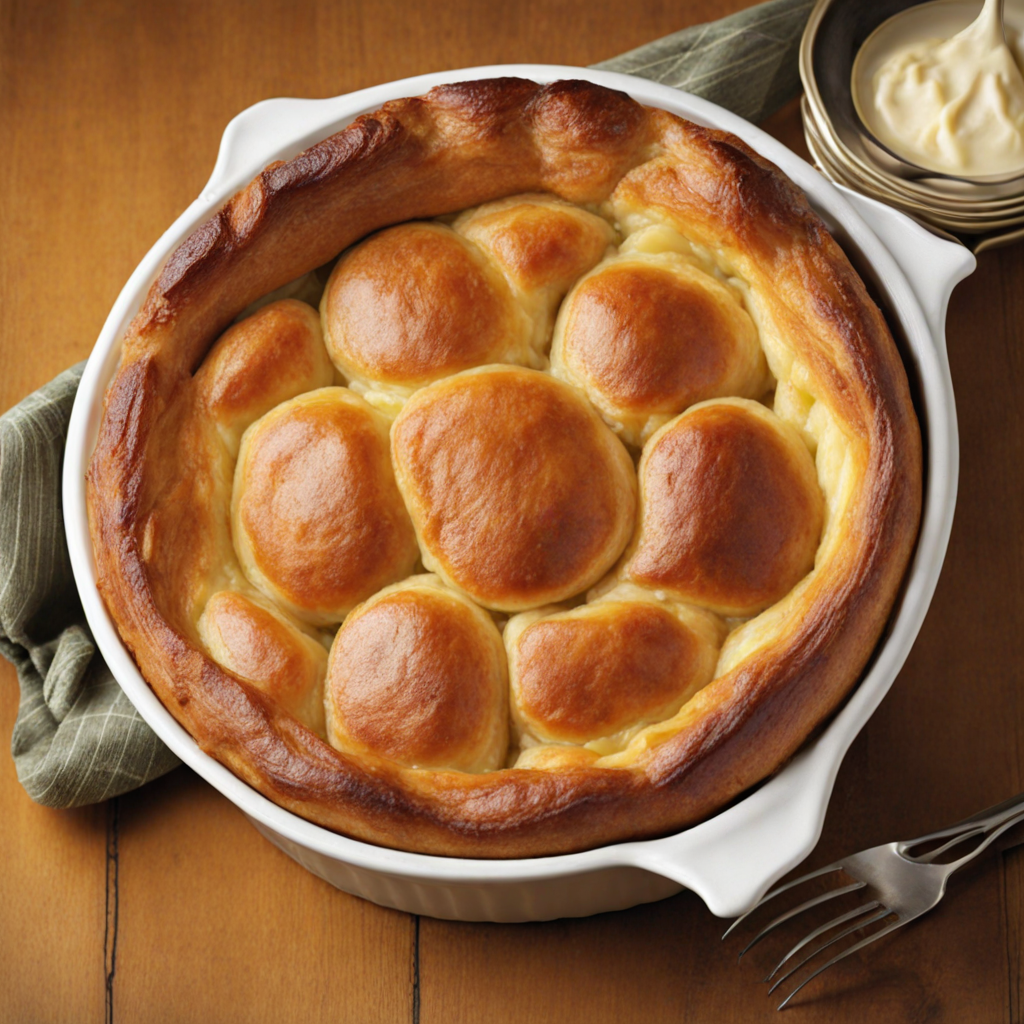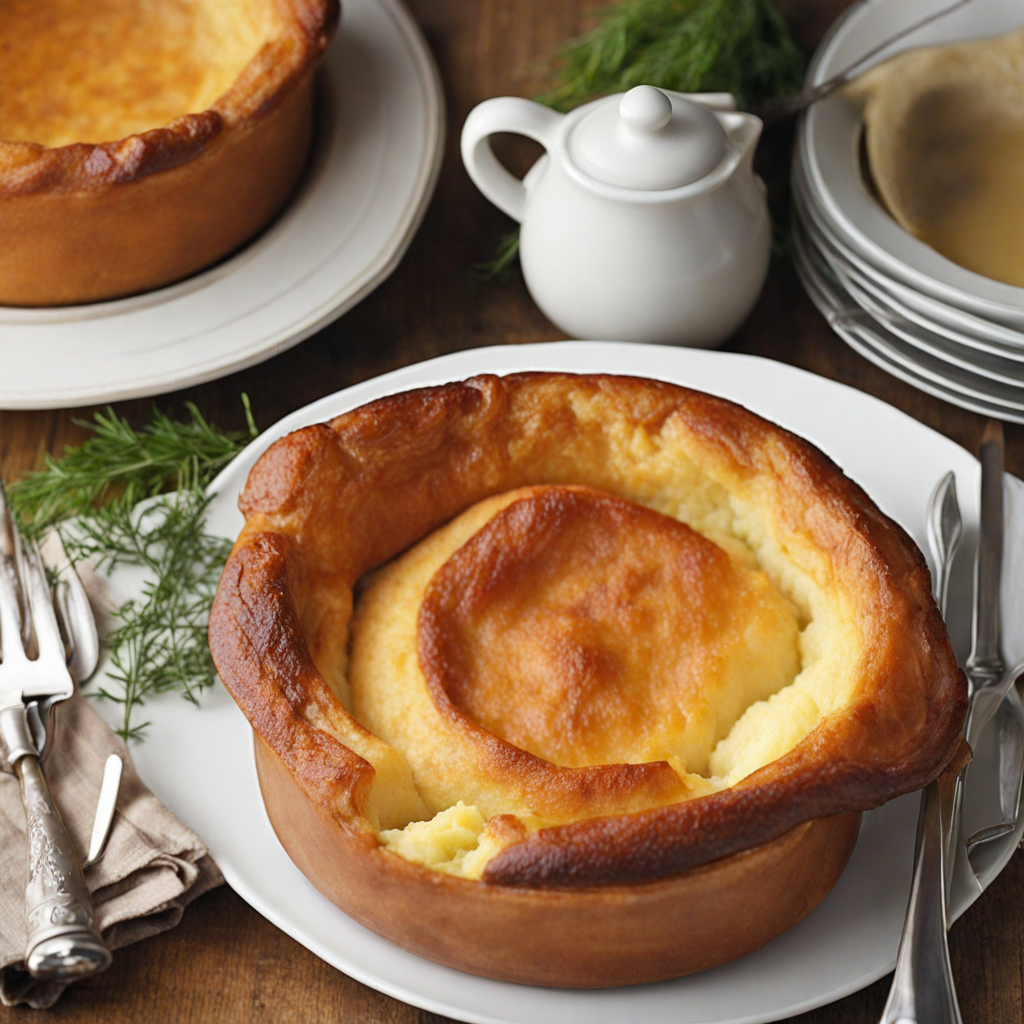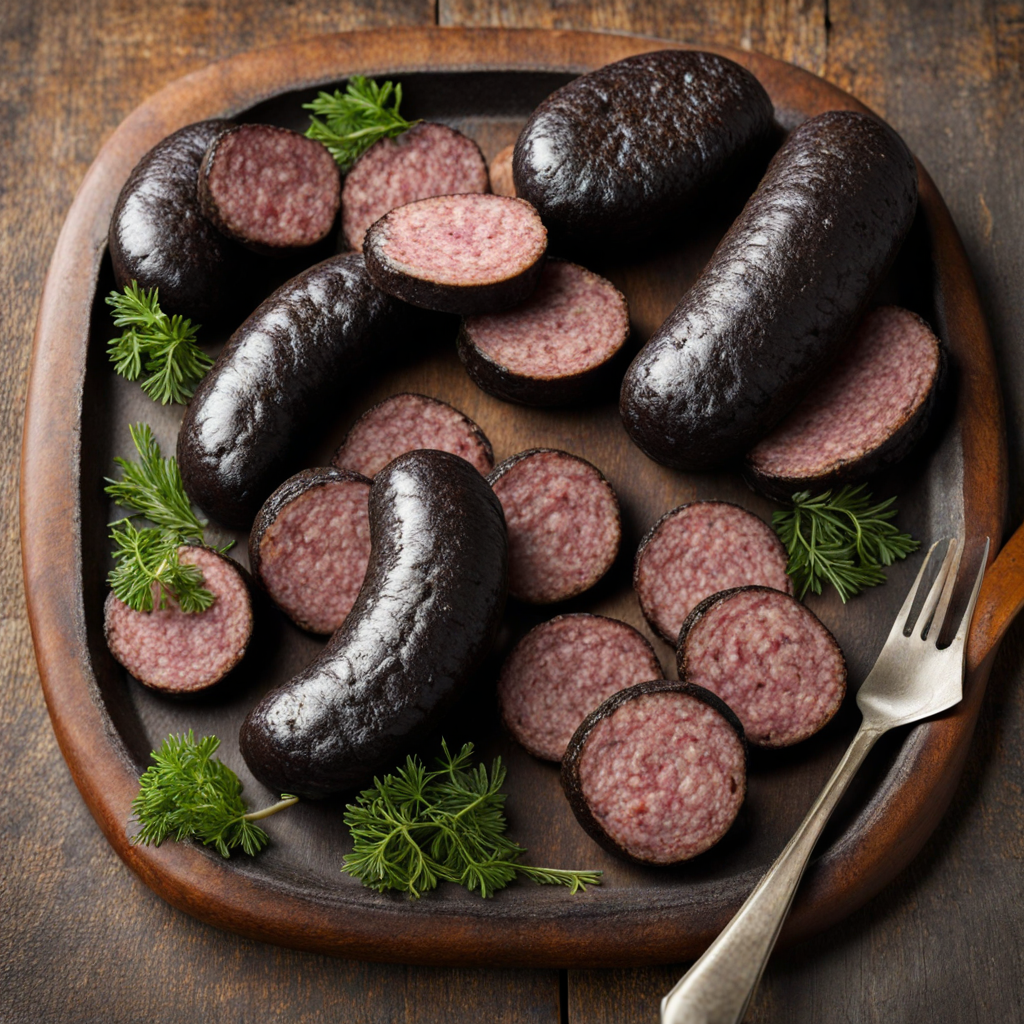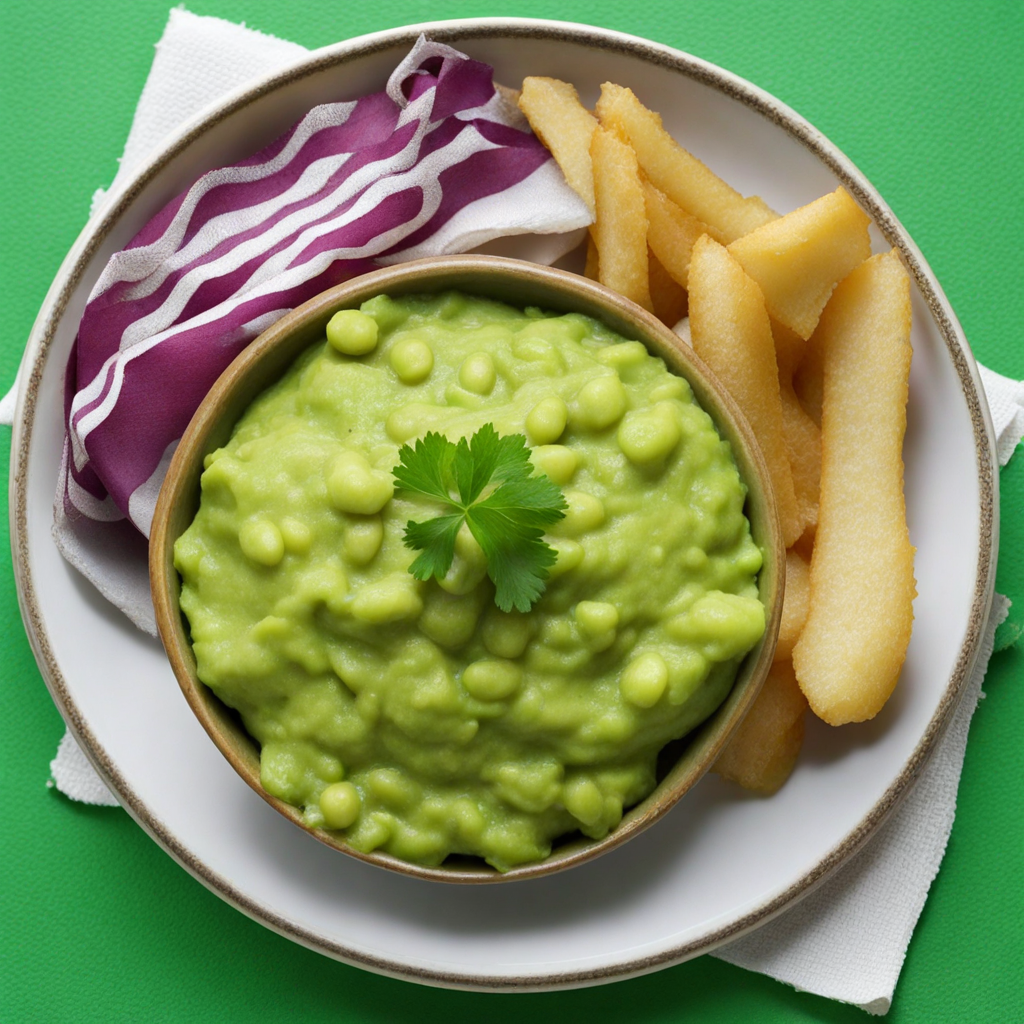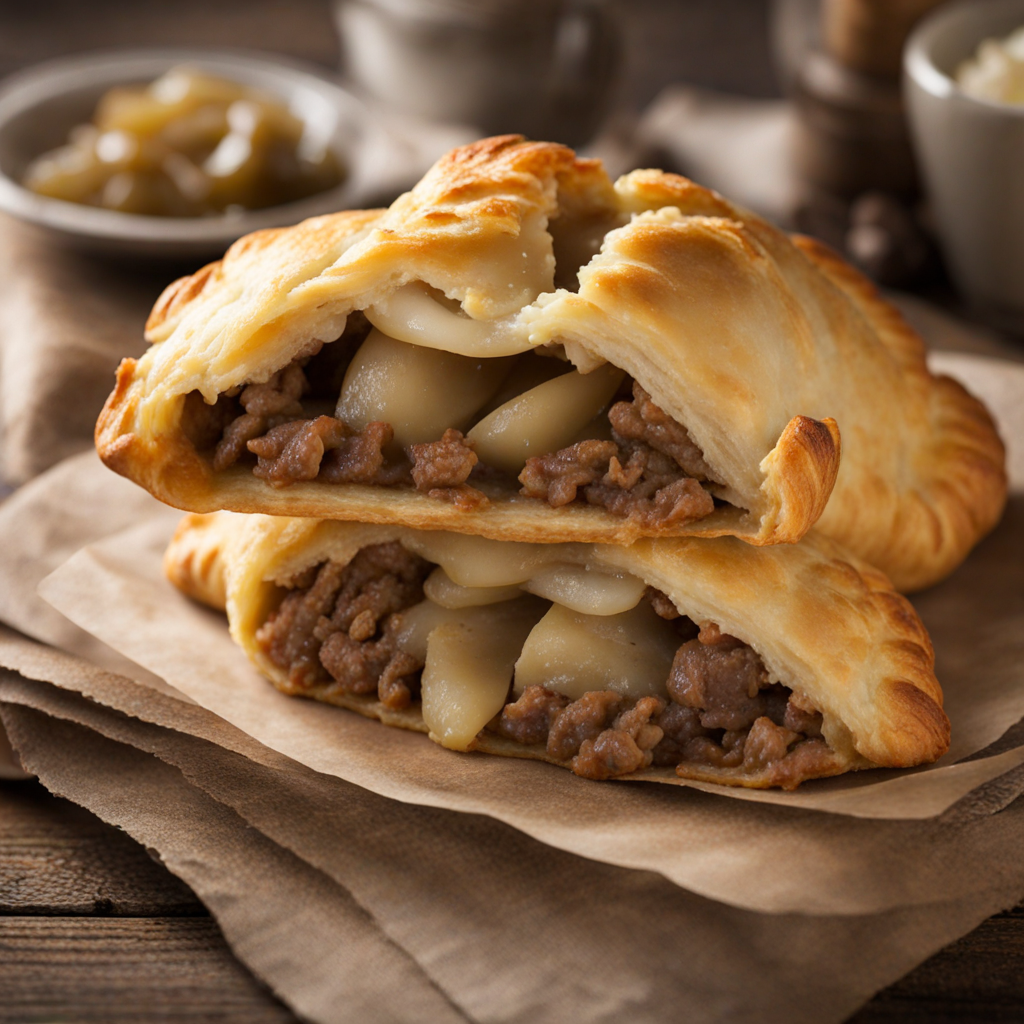Yorkshire Pudding
Yorkshire Pudding is a classic British dish that embodies the rustic charm of traditional English cuisine. Originating in the Yorkshire region, this dish is made from a simple batter consisting of flour, eggs, and milk or water. The mixture is poured into hot oil or drippings from roasted meat, usually beef, and baked until it puffs up into a golden-brown, airy delight. The texture is light and crispy on the outside while remaining soft and somewhat chewy on the inside, creating a delightful contrast that can elevate any meal. Traditionally served as an accompaniment to roast dinners, Yorkshire Pudding is often enjoyed as a vessel to soak up rich gravies. Its versatility allows it to be served in various ways, from the classic Sunday roast to innovative dishes like Yorkshire pudding wraps, where roasted meats and vegetables are enveloped in the pudding itself. The slightly savory flavor of the pudding complements the savory notes of roasted meats beautifully, making it a beloved staple in British households. Yorkshire Pudding is not just a side dish but a cultural icon that represents comfort food at its finest. The experience of tearing into a freshly baked pudding, filled with steam and flavor, is truly satisfying. Whether enjoyed as part of a grand feast or a simple family meal, Yorkshire Pudding promises a unique taste of the United Kingdom's culinary heritage, inviting food lovers to explore its delightful texture and rich flavors.
How It Became This Dish
The History of Yorkshire Pudding: A Culinary Tradition of the United Kingdom #### Origins Yorkshire pudding, a beloved staple of British cuisine, boasts a history that dates back to the 18th century. Its roots can be traced to the traditional English practice of cooking meat over an open flame. As the juices from the roasting meat dripped down, cooks would place a pan beneath it to catch the flavorful drippings. Flour, eggs, and milk were combined to create a batter that was poured into this pan, capturing the rich essence of the meat. The result was a deliciously fluffy pudding that not only complemented the roast but also soaked up the flavorful juices. The earliest mention of a dish resembling Yorkshire pudding appears in a 1737 recipe by Hannah Glasse, a prominent English cook and author. In her book, "The Art of Cookery Made Plain and Easy," she referred to a "pudding" that was cooked beneath meat. However, it wasn't until the 19th century that the dish gained its iconic status and was officially named "Yorkshire pudding," associated with the northern English county of Yorkshire. #### Cultural Significance Yorkshire pudding is more than just a dish; it is a cultural symbol in the United Kingdom, particularly in the northern regions. Traditionally served as part of the Sunday roast, it has become a centerpiece of family gatherings, embodying warmth, comfort, and togetherness. The pudding is often served alongside roast beef, accompanied by gravy, vegetables, and, in many households, a hearty helping of horseradish sauce. The dish reflects the historical context of British society, where the Sunday roast was a weekly ritual for many families. It represented a time of rest and reflection, as well as an opportunity for families to gather around the table and enjoy a meal together. Yorkshire pudding's ability to stretch the meal further—serving as a filling accompaniment to meat—also highlights the ingenuity and resourcefulness of those in the past, particularly during times of economic hardship. Moreover, Yorkshire pudding has evolved into a symbol of regional pride for the people of Yorkshire. The county is known for its culinary contributions, and Yorkshire pudding stands as a testament to the rich gastronomic heritage of the area. It is celebrated in local festivals, competitions, and culinary events, where the best versions of this beloved dish are showcased. #### Development Over Time As the 19th century progressed, Yorkshire pudding underwent several transformations. The Industrial Revolution brought about significant changes in food production and consumption patterns. With urbanization and an increasing population, the demand for efficient and economical meals rose. Yorkshire pudding, with its simple ingredients and straightforward preparation, became an ideal solution for busy households. In the early 20th century, the dish began to gain popularity beyond Yorkshire, spreading throughout the United Kingdom. It became a staple on menus in pubs and restaurants, often served as a starter or as part of a full roast dinner. The introduction of pre-made batters in the mid-20th century made it even easier for home cooks to prepare Yorkshire pudding, leading to its widespread adoption. The traditional method of making Yorkshire pudding involves baking the batter in a hot oven, preferably in a shallow pan or individual molds. The key to achieving the perfect rise and texture lies in the temperature of the oven and the use of drippings from the roast. The pudding puffs up dramatically, creating a light and airy interior with a crisp exterior. This technique has remained largely unchanged, even as the dish has adapted to modern tastes and cooking methods. In recent decades, Yorkshire pudding has experienced a renaissance, with chefs and home cooks experimenting with new flavors and presentations. Variations have emerged, including mini Yorkshire puddings filled with savory fillings or served as a base for canapés. The dish has also made its way into popular culture, appearing in food shows, cookbooks, and social media platforms, where its charm and versatility continue to captivate food enthusiasts. #### Yorkshire Pudding Today Today, Yorkshire pudding is firmly entrenched in British culinary culture. It is often served with a traditional Sunday roast, but its presence has expanded to include a wide variety of dishes. Many people enjoy it as part of a full English breakfast, while others experiment with sweet versions, filling it with fruit and custard or even chocolate. In recent years, the dish has gained international recognition, with enthusiasts and chefs around the world attempting to recreate the classic recipe or put their own spin on it. It has become a symbol of British comfort food, often found on menus in British pubs and restaurants worldwide. The celebration of Yorkshire pudding has also found its way into social media, where food bloggers and influencers showcase their creations, sharing tips on how to achieve the perfect rise and texture. The dish's adaptability allows it to remain relevant in contemporary cuisine, appealing to both traditionalists and modern food lovers. #### Conclusion Yorkshire pudding is more than just a dish; it is a culinary emblem of heritage, family, and regional pride. Its journey from humble beginnings as a means to utilize meat drippings to a cherished component of the Sunday roast illustrates the evolution of British food culture. With its rich history, cultural significance, and continued popularity, Yorkshire pudding remains a beloved staple in the hearts and homes of many, ensuring that this delightful dish will be enjoyed for generations to come. Whether served in its traditional form or reinvented for modern palates, Yorkshire pudding stands as a testament to the enduring power of good food in bringing people together.
You may like
Discover local flavors from United Kingdom


